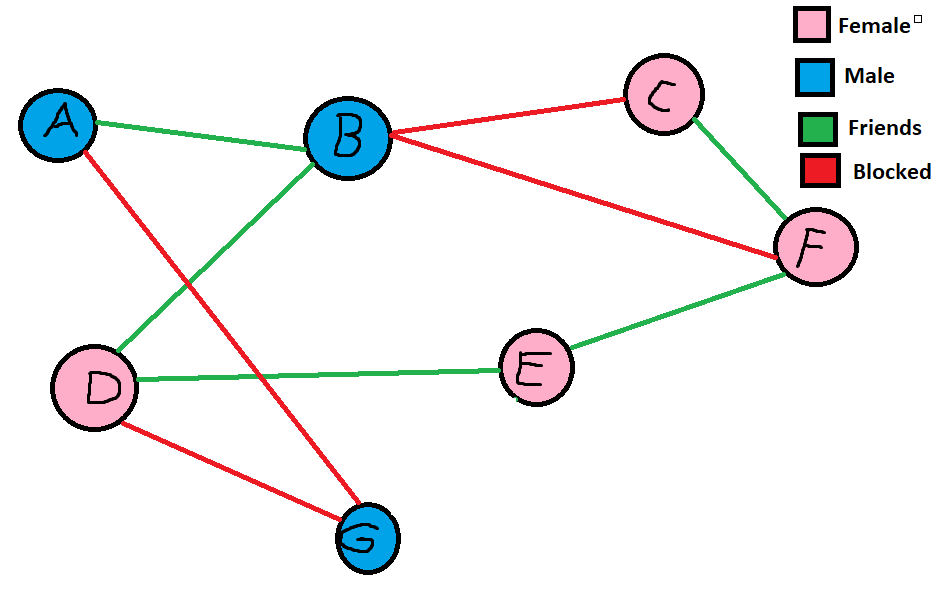There has been a sharp increase of technological advances through the years and with it comes a strong online presence for finding relationships. Online dating is overtaking the conventual norms of finding a partner through mutual friends, with studies showing that more people find relationships online rather than through real life connections. However, there does come drawbacks to the idea of online dating. The apps that exist today such as Tinder, Bumble, etc. all encapsulate similar matchmaking algorithms where one simply swipes through individuals based on specific set of personal preferences with no context until they match. What if there becomes a better way to get matches much more efficiently through triads?
This is where Facebook dating comes into consideration. Although from what I heard of the recent release news on Facebook dating not being promising, from what I’ve learnt in this course through the theories of positive and negative relationships in triads, I can apply this information into showing the power Facebook has to efficiently get you a partner. The goal is to provide more effective means of finding a match in the least amount of likes as possible using triads and the theory of strong and weak ties. Assuming not everyone shares a connection with everyone else in social media, there are places where Facebook can use mutual friends to find potential partners for other individuals more effectively. Assume in this example, each individual is looking for a relationship:

Take notice how when forming balanced triads in class was discussed on incomplete graphs, an algorithm can be produced to show profiles on Facebook Dating where they also mention the users mutual friends to utilize the idea of how people back in the day would find potential relationships. In this example, if A and B are friends and B and D are friends, the dating app can show user A the profile of user D (or vice versa) whilst additionally mentioning how they share a mutual friend B to increase the chance of the individual liking the other individual. This is mainly because of context. “The real problem with meeting people online is actually the same as meeting people in a bar — there is no context.” – (1) Meeting people online comes with risk of the unknown. In a case where a friend is aware of the individual you are potentially trying to like, this friend can vouch for friend A or D providing context.
Take another example of triad DEG. In this scenario E will never see G in her list of people to like for since her friend D has a negative connection with male G. However there comes a problem if there are 2 triads in where one is negative. Take for example triads DBE and BEF. Although DBE can be balanced by matching B and E, triad BEF won’t be balanced unless B and E don’t match. In this situation the graph becomes more advanced. The graph could possible weigh each edge of an individuals friendship and choose to balance BEF if the connection between E and F is stronger than D and E, or the algorithm could strive to always prioritize a 3 positive triad above a one positive triad.
There’s a lot to take from this and the idea of this graph is a more simplistic representation of a more complex network, but the main point to take is that Facebook has this power of matchmaking with its immense data on many aspects of individuals, its algorithms that it uses for the “people you may know” section can be utilized into the dating subsection, and the technology to potentially provide a more efficient matchmaking system in the ever expanding online dating atmosphere.
Sources:
(1) https://nypost.com/2017/04/01/finding-love-through-friends-is-better-than-online-dating/
(2) https://news.stanford.edu/2019/08/21/online-dating-popular-way-u-s-couples-meet/#:~:text=In%20a%20new%20study%20published,through%20personal%20contacts%20and%20connections.
(3) https://www.insidehook.com/article/internet/review-you-definitely-dont-need-facebook-dating